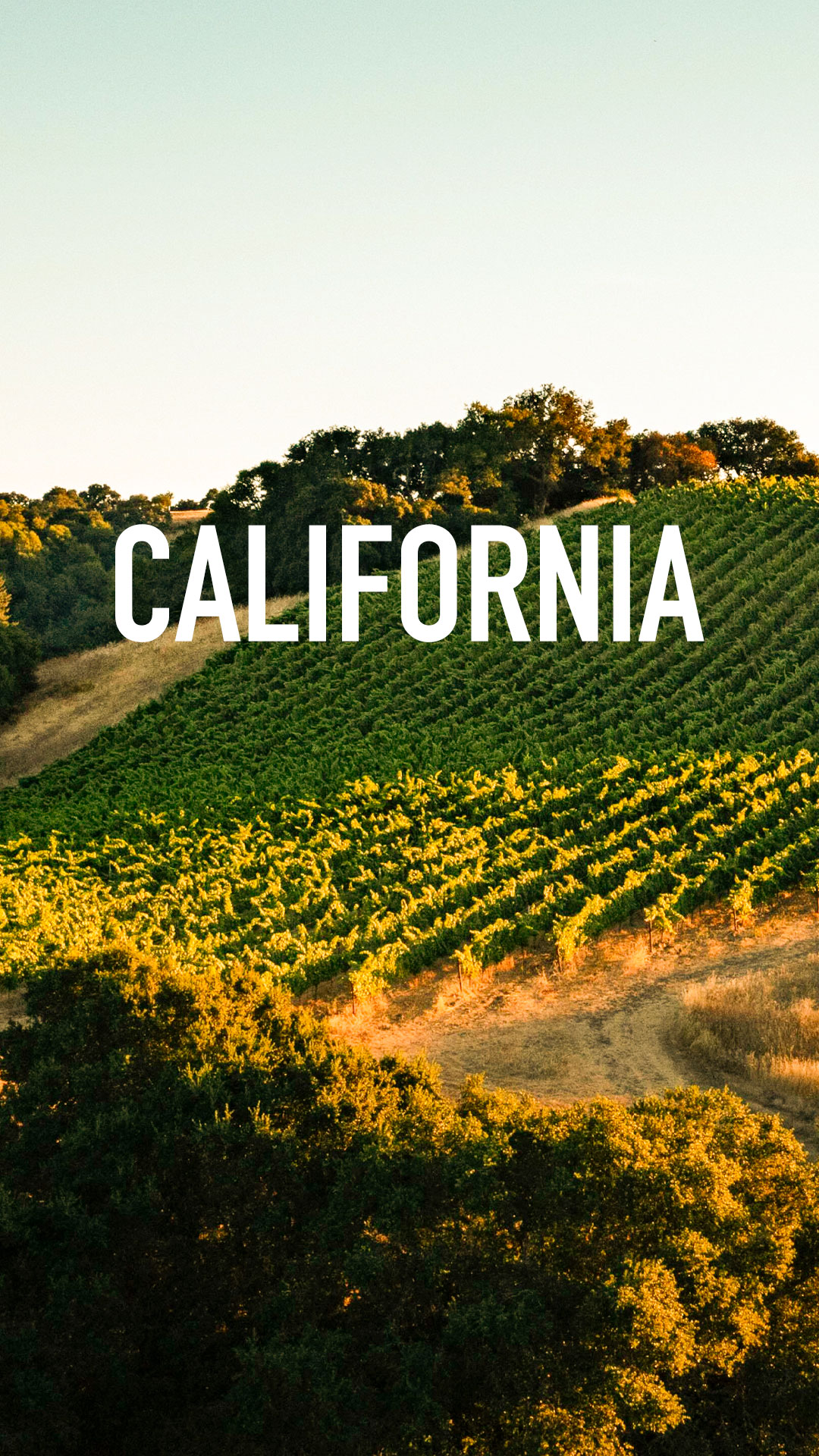
California is undoubtedly the heart of viticulture in the United States, responsible for around 90% of the national wine production. As part of the fourth largest wine producer in the world, this West Coast state not only competes with classic European wine regions but has also defined the modern style of many New World wines. But what makes Californian wines so special?
Climate and Geography: The Foundation of Quality
California’s Mediterranean climate, with hot, dry summers and mild winters, is one of its greatest assets. From the cool, foggy coasts of Sonoma and Mendocino, perfect for Pinot Noir and Chardonnay, to the sun-drenched valleys of Napa and Paso Robles, ideal for Cabernet Sauvignon, Zinfandel, Merlot, and Syrah, the state offers unique conditions for nearly all grape varieties.
The influence of the Pacific Ocean is crucial: the coastal breeze and morning fog help maintain the balance between grape ripening and natural acidity, even in warmer regions. The varied terrain, with slopes, valleys, and different altitudes, allows for highly specialized viticulture tailored to different styles.
Notable Wine Regions
California has more than 154 AVAs (American Viticultural Areas), but some regions stand out due to their international renown:
-
Napa Valley: Famous for its world-class Cabernet Sauvignon, this region is synonymous with luxury and excellence. With 475 producers, many of its wines rival the great Bordeaux (Wine Enthusiast – Napa Valley).
-
Sonoma County: Less ostentatious but incredibly diverse. Here, Chardonnay, Pinot Noir, and Rhône-inspired blends shine.
-
Paso Robles: Known for its bold and expressive reds, such as Zinfandel and Syrah, but also surprises with balanced and innovative whites.
-
Santa Barbara: Further south, this coastal region gained fame thanks to the movie Sideways and its exceptional Pinot Noir and Chardonnay potential.
-
Monterey: Located along California’s central coast, Monterey is a region with cool climate and unique soils, ideal for Chardonnay and Pinot Noir.
Wine Styles: Modernity with Identity
California wines are often described as rich, fruity, and approachable, with good body and a balanced use of oak. In recent years, however, there has been a shift toward more elegant, fresh styles with moderate alcohol content, appealing to new generations of wine enthusiasts.
In addition to classic varieties such as Cabernet Sauvignon, Zinfandel, Pinot Noir, and Chardonnay, the region embraces less conventional varieties and bold blends, reflecting the creative freedom of producers who are not constrained by the rigid rules of French AOCs. This results in wines that are both surprising and highly expressive.
“California is one of the most exciting places for wine in the world today, with a new generation of producers focused on freshness, authenticity, and terroir expression.” — Jon Bonné, critic and author of The New California Wine
Sustainability and Innovation
California leads the U.S. in sustainable viticulture, with dozens of certified producers and a strong commitment to environmentally-friendly practices. Water scarcity and wildfires have driven the industry to invest in technology and conscious management, preparing for the climate challenges of the future.
A Historic Milestone: The Judgment of Paris
The global recognition of Californian wines was boosted by the historic Judgment of Paris in 1976, when local wines outperformed French wines in a blind tasting, forever changing global perceptions of the New World and opening the doors for California’s international success (Wikipedia – Judgment of Paris).
Why You Should Try Californian Wines
Tasting a Californian wine is like drinking the innovative spirit of the American West Coast: a fusion of nature, technique, and passion. Whether you prefer fresh, aromatic whites or bold, full-bodied reds, there is always a Californian wine to suit your taste. Click here!

